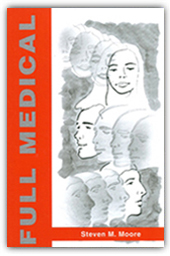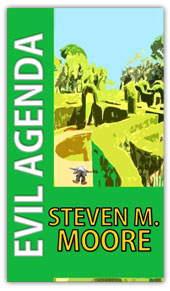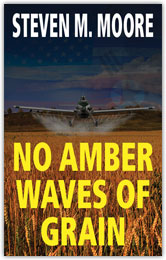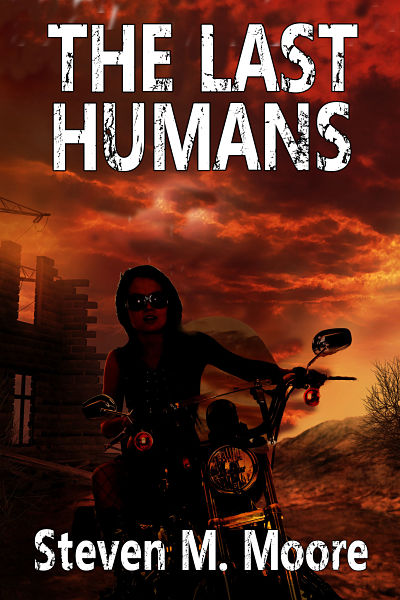Characters must evolve…
I never start a new story thinking it will become a novel, let alone the first book in a series. Sometimes it becomes a stand-alone novel (More than Human: The Mensa Contagion is an example of a stand-alone) or a bridge book between two series (The Golden Years of Virginia Morgan is an example). The only exception was A.B. Carolan’s Origins, where we’re all still waiting for the rest of that trilogy [wink, wink]. Characters in a series often inspire me to give them their own novel(s), though: Ashley Scott in The Golden Years of Virginia Morgan and Steve Morgan in the “Inspector Steve Morgan” trilogy both appeared in previous series; and the inimitable Esther Brookstone and her paramour and later husband Bastiann van Coevorden first appeared in the “Detectives Chen and Castilblanco” series.
That inspiration—indeed, creating the series itself—allows a fiction writer to do something often missed by even those who set out to create a series: Portraying the evolution of their characters. Michael Connolly does a good job of that in his Harry Bosch series; David Baldacci, Lee Child, and Jeffrey Deaver not so much in theirs. In fact, Baldacci and Deaver’s stand-alone novels are far better than the ones in their series because there is little character evolution in those!
Generally speaking, time progresses in a series, so character evolution should do that too. For example, Esther Brookstone progresses from a widow (three husbands before Bastiann) working for Scotland Yard in Rembrandt’s Angel to a retired and remarried lady in her nine-book series. Flashbacks are used to add past events in her life. (Esther’s often recall her past as an MI6 spy in East Berlin when she was much younger.)
 Flashbacks represent one way to achieve this character evolution, of course, and they often refer to events in previous stories. The Goldilocks principle applies: The author doesn’t want too much or too little of that, just enough. And it can be done via the principal character’s memories or their colleagues. (And, to give it an interesting spin, one secondary character might recall things differently compared to another’s.)
Flashbacks represent one way to achieve this character evolution, of course, and they often refer to events in previous stories. The Goldilocks principle applies: The author doesn’t want too much or too little of that, just enough. And it can be done via the principal character’s memories or their colleagues. (And, to give it an interesting spin, one secondary character might recall things differently compared to another’s.)
The same goes for villains. I’ve been very careful portraying Vladimir Kalinin, my Russian ex-pat arch-villain, for example. He appeared in my very first novel, Full Medical, but his appearances jump around my fictional timeline that includes several series and bridge books from The Midas Bomb to Soldiers of God. And because I jumped around that timeline in my storytelling, it was a challenge to make his evolution through various novels a smooth one.
 Kalinin is in fact a good example in another way: He’s a complex character. You might even think he has a good side if you only read No Amber Waves of Grain and the last few Esther Brookstone and Steve Morgan novels. Going back and forth between good and evil doesn’t make him into a Dr. Jekyll and Mr. Hyde; it makes him seem more human. His swings back and forth represent what we so often see in real human behavior, albeit a bit extreme at times, so why not include them in my fiction? Pure heroes and pure villains are stereotypes that belong in old Hollywood flicks. They don’t belong in modern storytelling. Real human beings are more complicated than that.
Kalinin is in fact a good example in another way: He’s a complex character. You might even think he has a good side if you only read No Amber Waves of Grain and the last few Esther Brookstone and Steve Morgan novels. Going back and forth between good and evil doesn’t make him into a Dr. Jekyll and Mr. Hyde; it makes him seem more human. His swings back and forth represent what we so often see in real human behavior, albeit a bit extreme at times, so why not include them in my fiction? Pure heroes and pure villains are stereotypes that belong in old Hollywood flicks. They don’t belong in modern storytelling. Real human beings are more complicated than that.
Your characters must evolve, and that evolution must seem real. We all change over our lifetimes as we react to different events and stimuli in our lives. Authors putting that into their fiction make their stories come alive.
***
 Comments are always welcome. (Please follow the rules on the “Join the Conversation” web page. If you don’t, your comments are considered to be spam.)
Comments are always welcome. (Please follow the rules on the “Join the Conversation” web page. If you don’t, your comments are considered to be spam.)
The “Clones and Mutants” trilogy. The evolution of Vladimir Kalinin’s character might be the most complicated and evolved of any fictional villain. While Full Medical, Evil Agenda, and No Amber Ways of Grain are technically sci-fi thrillers, readers and writers can consider them to be the study of an evil genius at work. It all really starts with The Midas Bomb and ends with Soldiers of God, but you, the reader, can jump in anywhere. All my novels can be read independently. And all those involving Kalinin are available in ebook format or are free PDF downloads (see the list on the “Free Stuff & Contests” web page).
Around the world and to the stars! In libris libertas!
